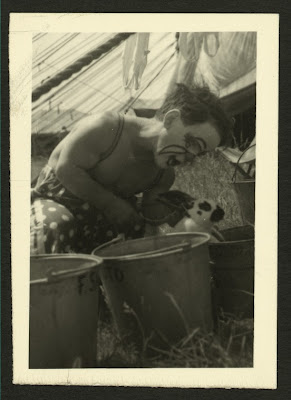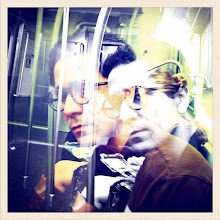http://www.massobs.org.uk/index.htm
Searching the base, I came across a documentary of Reco's circus. The most striking thing about the study was the excessive violence detailed in the study. My thoughts on that, film, and the circus' demise follow:

Herbert Reco was a performance factotum who had begun his circus in the year of the investigation. He was chiefly a tightrope walker, clown and acrobat, but to his colleagues more a liar, scoundrel and spendthrift. This is not to mention his fiery temper. On one occasion he shot at three hundred drunken circus goers with a shotgun, before attacking them with spiked tent poles and turning a bear loose on them. The investigator of report suggests his malice stems from an inferiority complex common to circus workers. Reco:
[P]eople think we’re nothing, associate us with fairs or gypsies because we live in caravans, but we’re just as educated as they are, if not more so. (16)

The desire to be distinguished from and above fair workers is a common thread throughout the complaints of the circus troupe. The desire, on the other hand, to affirm their higher status and legitimize their talents by associating themselves with the filmic world is as frequent and more pertinent to our discussion.

A number of performers in Reco’s circus had been involved at some point with film production. Mr. Cook trained horses for studios and his wife was in two features. Even Reco had assisted with technical circus points in the film, “Dark Tower.” He also often buys animals from studios that no longer need them (18, 27, 25). But beyond the intersections of film and circus as correspondent, performance media, there is a sense throughout the study that Reco’s circus has been or is in the process of being superseded by this new medium of spectacle. Mr. Cook made this explicit:
I think the circus is dying out. I don’t care what they say about it booming again, - it’s dying out… [W]hereas in the old days there was no amusement near at hand, now [children] go to the pictures two or three times a week. Travel isn’t what it used to be, and if they haven’t got a picture palace they can go into the next town on the bus… (24)

And more suggestively, whenever they arrive in a town, one of the favorite activities of the circus troupe (beside drinking and violence) was going to the pictures. Even they cannot resist participation in the new medium that was devastating their livelihood.

And I suspect that, more than from an inferiority complex, the heavy violence in Reco’s circus community might stem from frustration in becoming a dispossessed medium, compounded with the loss of admiration in the towns. I draw my conjecture from the grotesque humor and targeting of the violence. Stanley Mason, a midget clown, would get drunk and fight children from the towns after his performances (51). Monkeys were frequently beaten by all circus workers but inversely received only the best food; whereas a bear was fed stale bread and sour milk, a monkey got fresh lettuce, carrots, bread, jam and butter—and once, after having been beaten for some misbehavior, a monkey was fed a cantaloupe with sugar on it, being told by Reco’s wife, “There you are, you naughty girl—no lettuce for you today” (55, 83). In either of these cases, in addition to the one mentioned above where Reco attacked a crowd with a shotgun and a live bear (this is not to mention a number of other violent incidents against audience members), it seems to be the case that the attacks were focused against those organs most essential to maintaining the system of the circus, namely circus goers and the spectacle that they come to see (animals, etc.), and that additionally they had a perverse humor to them—i.e. the drunken, dwarf clown sent out to fight the children.

It is as if the circus troupe sensed an inevitable futility and instinctively elected violence to bemoan the obsolescence of their medium. It is certainly no more than a sense. The investigator describes Reco’s plans:
After the war he believes there will be so many circuses on the road that it would be advisable to have his headquarters in a more central position, so that the rival circuses will not know which way he intends to travel when starting off at the beginning of the season. (18-19)

Of course such was never the case. Film dominated the genre of spectacle even at the time of this investigation. One of Mrs. Cook’s keepsakes was a photographic still from a film in which she had starred (25). Her purchase on stardom was no longer bought with success in the circus but instead with evidence of her participation in the filmic world. Reco’s violence may not be justified, but it may at least be contextualized. The de-mediatization of his life’s art likely led to more aggressive means to justify its presence—and it is perhaps not dissimilar from the wild representations of painting (read cubism) after the advent of the photograph, or even of the high experimentalism of poetry (the modernists, futurists, etc) after the advent of radio. If we can take Reco’s circus as a test case for his time, then the circus too—with its own distinct sense of performance—had its violent exit.
'O Dreamland (1953)' by Lindsay Anderson, though not exactly a document of the circus, captures the violence and dementia of an amusement medium well. Enjoy:
Part I:
Part II:




No comments:
Post a Comment